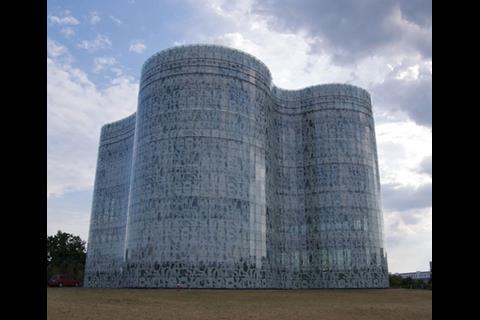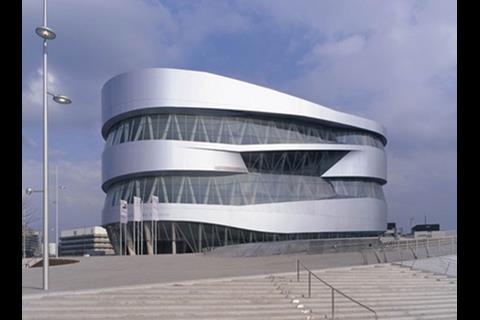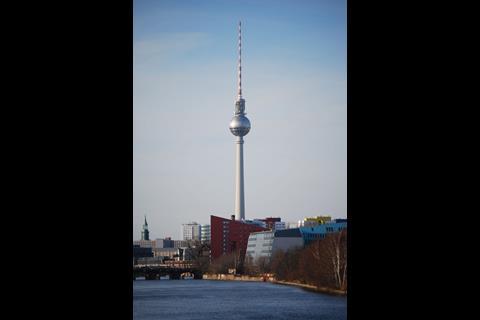Germany, traditionally the motor of European construction, has stagnated for a decade. Now it’s sputtering back into life – but will the credit crunch kill it? John Atkins of EC Harris reports
01 / The german Economy
Despite having enjoyed two years of solid economic growth in 2006 and 2007, with GDP increases of 2.9%, and 2.5% respectively, Germany is far from being immune to the global economic slowdown.
With consumer prices up 3.3% in the year to June, inflation has surfaced as one of the biggest threats to future stability.
Even the jobs market seems to have reached a peak, with unemployment, which fell from 10.6% in 2005 to 7.9% in 2007, now slightly back up at 8% in the first quarter of this year.
As a result, GDP growth forecasts have been revised, with the government expecting it to be 1.9% in 2008 and a meagre 1-1.5% in 2009.
02 / the property market
Those who thought the downturn had bypassed Germany should think again. After a boom year in 2006 and record growth in 2007, the volume of property transactions collapsed in 2008. There were €11.9bn (£9.5bn) of deals in the first half of 2008, 30% less than the same period in 2006 and 50% less than the first half of 2007.
However, Germany is still attracting foreign investment, with two-thirds of property investments being made by foreign investors during the past two years.
Interestingly, the investment focus has changed in the past year. In 2007, office buildings made up half of overall investments, but that fell to a third in the first half of 2008. The retail sector now leads, at 40%, and buildings for logistics purposes is the only sector to have grown, accounting for 10% of total investment this year.
Unexpectedly, the introduction of G-Reits (German real estate investment trusts) in 2007 has made virtually no impact on the German property market, because of the US sub-prime crisis and a number of legal and tax-related problems.
The rapid rise of investment in property 2006 and 2007 may have breathed life into the German construction industry, but it also had a less pleasant effect – rapidly rising construction inflation.
03 / Construction
In 2006 the industrial building and residential sectors led the charge. The industrial sector was strong in 2007 and remained one of the driving forces in the first months of 2008, too, with an average monthly turnover in the first half of the year down only slightly at 4%.
The residential sector, however, has become the problem child of the construction sector. In 2007 residential building permits declined by 25%, although non-residential building permits remained stable, with total build area and estimated costs even rising by about 10%.
The infrastructure sector was more encouraging, with workload up almost 10% on last year and 17% on 2006. The driving force for this was road construction, with orders in the first quarter of 2008 up by 45% on the fourth quarter 2006
As reported in an earlier country focus (16 March 2007, page 76), 2006 was the year that the German construction industry finally emerged from its decade of hibernation. In 2007 the pace even accelerated, with incoming orders growing by a 8.4% (3.4% in constant terms) on the previous year. The fourth quarter exceeded all expectations with 15.2% growth year-on-year.
Half way through 2008, the construction industry’s outlook remains positive: economic institutions are forecasting investment growth of between 0.3% and 3%, although the higher forecasts for the full year look over-ambitious, since the government believes orders will decline 0.6% in the first six months of 2008. For 2009, the forecasters are less enthusiastic, with figures ranging from –1.5% to 1.4%.
After years of declining orders and shrinking order backlogs, the development since 2006 has certainly been encouraging, although German construction companies are far from rejoicing. Increased turnover did not immediately translate into increased profits as contractors had been charging “dumping” prices for quite a while. As a result, there was an abnormal rise in insolvencies among major players in this sector, which started in 2005 and remained high in 2006 and 2007. Victims included some of the biggest contractors, including Philipp Holzmann, Walter Bau and Wiemer & Trachte.
It seems as though this has come to an end now. The old, loss-making orders have been processed and, for new bids, companies have been in a position to make much higher offers, as workload levels have been much higher. The remaining risk – that of volatile commodity prices – has been reduced by offering fee structures that are fixed only for short periods and for certain products or, alternatively, agreeing fees that can be adjusted to actual market prices.
Reassuringly, contractors report full order books, which should hold recession at bay until the end of the year, at least. Furthermore, the usage rate of mechanical plant in June was about 5% higher than the average over the past five years.
The expansion of the construction industry has borne fruit. The number of employed construction workers rose in 2006 for the first time since 1993, and the German labour market has been in a good condition since 2006, with unemployment down from 10.6% in 2005 to 7.3% in June 2008. Because of high social security contributions in Germany, where on-costs add some 80% to actual hourly rates, labour rate rises have a major effect on construction costs; labour costs account for about 40% of turnover.
As in all other sectors, construction workers’ wages have risen by more than the average last year. This has been slightly absorbed by declining add-on costs but they increasing play their part in raising construction costs.
04 / costs
Official figures indicate general construction cost increases of 0.9% in 2005, 2.7% in 2006, 7.1% in 2007 and 2.8% in the first half of 2008. Unofficial figures indicate that construction prices rose by about 4% in 2005, with a further rise of 20-25% over the past three-and-a-half years. The costs of technical installation went up by 25-30% over the same period.
Looking at the sectors, the rise in construction costs (2005 to July 2008) was more or less equal:
- Residential buildings: 12.4%
- Office buildings: 12.8%
- Industrial buildings: 13.2%
- Road construction: 15.1%.
Unofficial inflation figures indicate even a higher inflation of about 20-25% over the past three-and-a-half years.
The factors for this high level of inflation have not changed since reported in March 2007, except that the influence of inflation has become more serious. The main reasons for the current inflation levels include:
- The high rate of insolvencies among major contractors, which have led to a decrease in competition
- Contractors are becoming more wary about cut-throat pricing because of the high rate of projects ending up in losses forcontractors
- Increased demand, as a result of the economic recovery and the property investment boom, which has reduced competition among contractors, particularly for the construction and refurbishment of industrial and public buildings
- A rise of producer prices (about 15% in the past three-and-a-half years, accelerating to 8.9% in July 2008) mainly driven by a massive rise in energy costs and some material costs following the boom in commodity markets, but also by the rise of labour costs
- An increase in subsidiary costs (for example, for transport) owing to increasing demand and the rising cost of fuel and labour.
05 / The future
According to the latest figures, consumer spending in Germany has regressed since last autumn, as a result of the global slowdown. Furthermore, the IFO business climate index has declined for the third month in a row and GDP fell in the second quarter of 2008, with another decline expected in the third quarter.
This development is partly caused by the recent changes in one of the main pillars of the German economy – the construction industry. A downturn of 3.5% in the second quarter is partly a reaction to an increase of 5.7% in the first quarter, owing to the mild winter, but the outlook is not as positive as it was at the beginning of the year. Thus, it might have been a little too ambitious.
Last but not least, the already high standards of green building in Germany need to be considered. Even stricter standards will apply with the upcoming regulation of energy saving for buildings (EnEV 2009), which sets standards much higher than the comparable standards set by BREAM. The impact on the construction sector cannot be foreseen yet. However, despite savings in running costs over the long term, an increase in construction costs, in the order of 10-20%, appears to be quite realistic.
It remains to be seen if the higher investment costs can be compensated for by a rise of rents in the foreseeable future.
If this is not the case, the blossom of the German construction market might be short-lived.
06 / construction costs (£/m2)
(See table attached)
Downloads
Construction costs (£/m2)
Other, Size 0 kb




























No comments yet